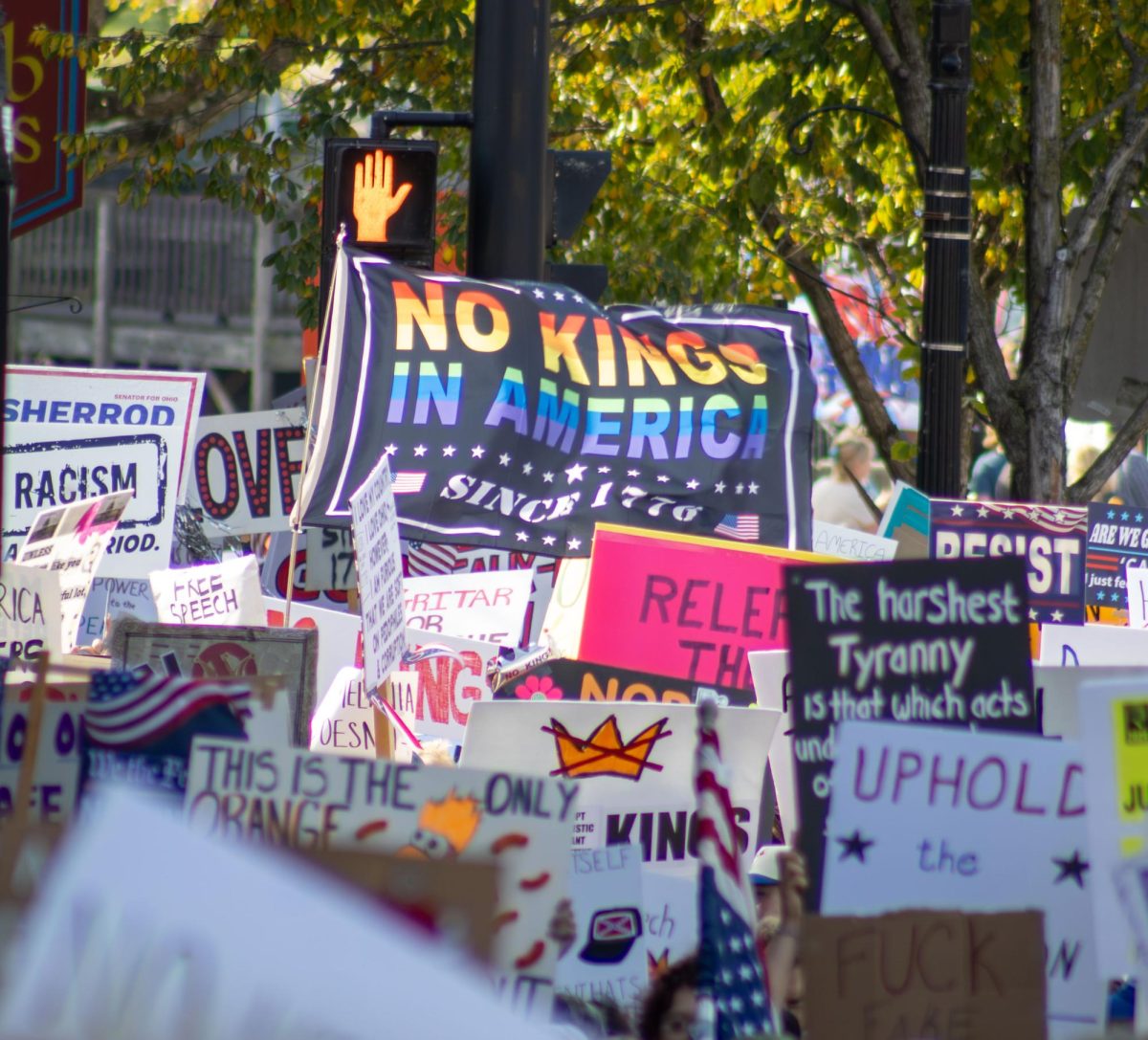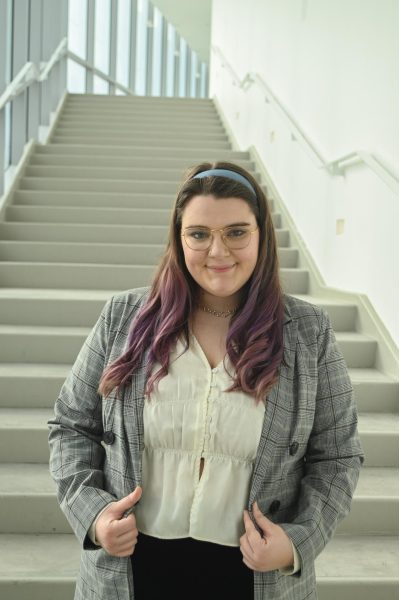When controversial speaker Kyle Rittenhouse spoke inside the Kiva on April 16, 2024, the Kent State Police used bike racks to separate attendees and opposing groups. This type of creativity is one of the many steps that go into planning for when protests happen at Kent State University.
Kent State University has a history of protests. In 1970, an anti-war protest of the Vietnam War turned tragic when the Ohio National Guard opened fire, killing four students and injuring nine others.
Kent State University has developed multiple roles over the years where part of the job is to work in relation to protests.
Executive Director of the Kent State Student Center and Involvement Ben Davis said he works directly with Kent State Police Chief Chris Jenkins and faculty marshals to create an ecosystem of communication and student safety for when protests happen on campus.
“I think we have good relationships with our students, and I hope that they know that my intention is to always be the best advocate for whatever it is they’re trying to talk about,” Davis said
According to Davis, he is one of three divisions at Kent State that helps ensure safety during protests, along with the Kent State Police and the faculty marshals.
If a student organization wants to demonstrate in a space on campus, Davis talks them through how to reserve the space and what policies exist at the space they reserved. If they didn’t reserve a space, he can talk them through the policies in the general area they will be in.
Davis urges student organizations to let him know about planned protest beforehand so he can help organize the demonstration. For example, he can let organizations know about construction happening so it doesn’t get in the way of marching on campus.
“Maybe take a different route, so you don’t have all these people go and then have to double back,” Davis said.
Davis also asks students how they are promoting their event. If social media is involved, he said that could change the dynamic of what students are planning and that more people who disagree with the protest might come to share their own point of view.
Knowing how the group advertised helps the university plan for the number of people and any counterprotest that might happen. If it was advertised online, knowing whether the feedback was positive or negative helps the university understand and prepare for the response to keep everyone safe, Davis said.
If a non-student organization is coming to campus, the process is similar, except they normally won’t know about it. According to the Kent Stater in Spring 2023, an anti-abortion center called Center of Bio-Ethical Reform displayed graphic images of aborted fetuses on the K. A counterprotest developed, and Kent staff and police asked groups to move away from each other as tensions rose, which led to tensions calming down.
Kent State University also has an Emergency Response Team made up of first responders, members of major functions of the university and vice presidents of the university. The last time the group was used was when gun rights activist Kaitlin Bennett hosted an open carry rally in 2018.
Versions of the group were also used when Rittenhouse came to campus. Emergency management has come to most universities in the last 10-15 years, according to the standards being adopted by Federal Emergency Management Agency.
When Bennett came to campus, the Emergency Response Team was used to contact University Facilities Management to have objects that could be used as weapons, like trash cans, removed.
“When Kaitlin Bennett came, we knew it was going to be extraordinarily volatile. We removed every rock from that part of campus, so a rock bed and any landscape. We got rid of the rocks. Rocks are weapons,” Jenkins said.
The Emergency Response Team was also used with Rittenhouse. The Information Technology representative helped bring large screens to display data and video surveillance systems into the command center that was set up in the Ballroom Balcony in the Student Center, according to Jenkins.
Jenkins works closely with Davis to prepare and ensure student safety during protests. With pop-up activism events, they can’t do much preparation; their job is more responsive.
A Division of Student Life staff member will see if it’s a group affiliated with the university or from outside. They will then educate them on policy, the law, what they can and can’t do and assess it in the moment.
“If they’re out there doing activism because they like Snickers bars versus Paydays, yeah, I’m not really worried about there being conflict. But if it’s more volatile, we may monitor it directly with officers present. We may monitor it through cameras — that’s the in-the-moment stuff,” Jenkins said.
When they know about the event, the police can do a lot more preparation. The Kent State Police lieutenants investigate and gather information on the groups coming to campus, especially external ones – where they have been recently and whether it was an institution or not.
“So, take Kyle Rittenhouse. When he was here, we knew he was coming [as] part of Turning Point, and we reached out directly to Kyle and his team. He actually had a security team, so they were able to continue those conversations all the way up to the point of his visit. And then the places that he was at prior, we contacted them, and you learn from each other,” Jenkins said.
To prepare for Rittenhouse, the police rented extra bicycle racks to use as dividers to keep different groups separated. They had the grounds facilities reform anything that could be used as a weapon, an example being trash cans.
Davis created a path in the Student Center with one way in and one way out. The center was also shut down a couple of hours before the event to prepare the path.
If the Kent State Police need extra help, they can call on a mobile field force from the Ohio State Patrol, which is trained to deal with civil unrest and disorder.
With bigger events like the Bennett rally, the Kent State Police force only has 29 members, but at that specific event, just under 400 police officers were on hand.
This included the Ohio State Patrol special unit and police from the University of Akron, Miami University, Ohio State University and Kent State University, which partners with the city of Kent Police and the Sheriff’s Office.
Federal partners including regional FBI offices in Cleveland and Akron, and sometimes the Bureau of Alcohol, Tobacco, Firearms and Explosives help the Kent State Police with intelligence and information gathering.
Faculty marshals, who are trained by the Kent State Police, also offer extra resources at protests using their skills to deescalate situations.
“Faculty marshals have somewhat been reinvented the last couple years, and they are proven to be extraordinarily helpful in and just helping educate, helping calm, helping put a bigger perspective on things,” Jenkins said.
Abigail Kress is a reporter. Contact her at [email protected].



